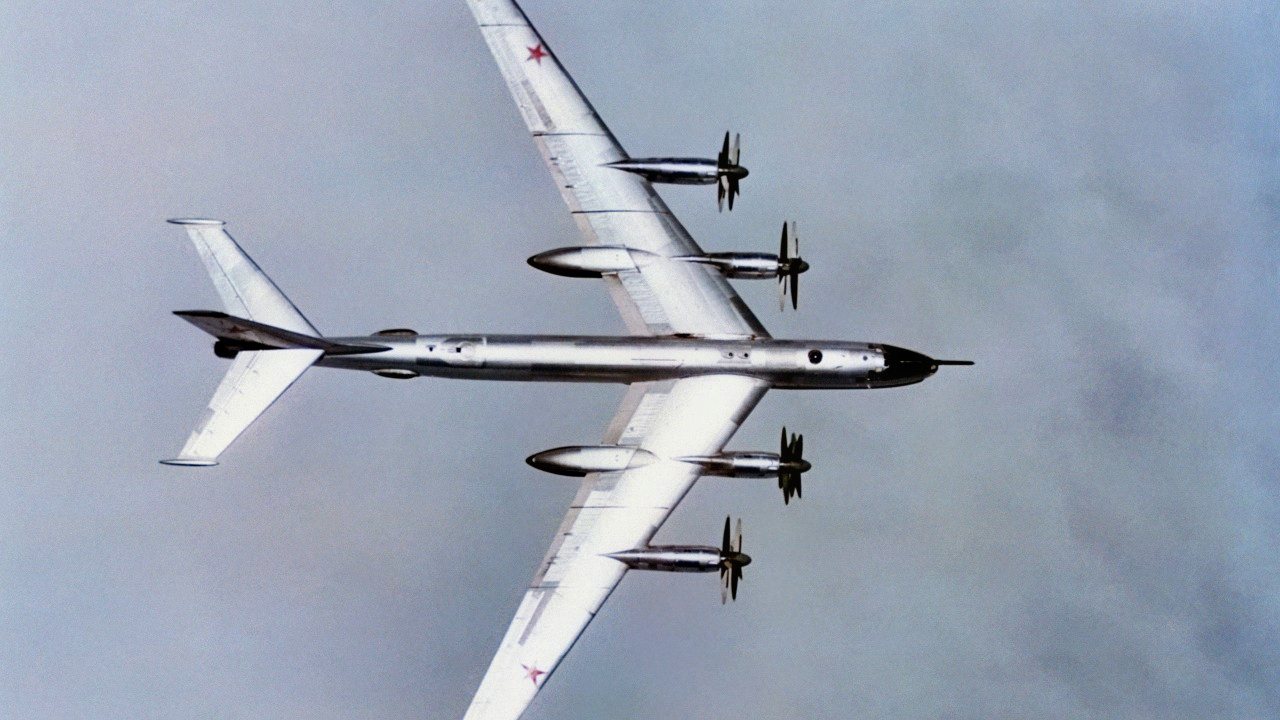Do Not Underestimate Russia's Tu-95 Bear Bomber
Widely viewed as the most successful bomber produced by the Soviet Union, the Tu-95 Bear was an enduring turbo propeller-driven symbol of Soviet ingenuity.
Summary: The Tu-95 Bear, a symbol of Soviet aviation ingenuity and a testament to its enduring legacy, represents one of the most significant contributions to strategic bomber design during the Cold War. Opting for turbo-prop engines over turbojets to achieve unprecedented range, the Soviet Union equipped the Tu-95 with the capability to strike far-flung targets, effectively making it a strategic threat to the U.S. Since its introduction in 1956, the Bear has adapted to various roles, including electronic surveillance and launching nuclear cruise missiles, ensuring its place in modern warfare despite its age.
The Tu-95 Bear’s Details
Widely viewed as the most successful bomber produced by the Soviet Union, the Tu-95 Bear was an enduring turbo propeller-driven symbol of Soviet ingenuity.
The designers of the great bird opted for the turbo-prop engine configuration over a turbojet engine set because the Soviet designers did not believe their indigenous turbojets could get the plane to the minimum 10,000 kilometers (around 6,200 miles) of range. The turbo-prop engines allowed the plane to fly over 13,000 km. That capability made the system an effective threat as a strategic bomber that could be used against the U.S..
Entering service in 1956, the Tu-95 Bear continues to operate in the Russian Aerospace Forces today. It saw combat against ISIS elements in 2015, fighting as part of the Russian military’s Syria expedition to support the country’s strongman, Bashar al-Assad.
Russian war planners intend to keep the Tu-95 Bear in service until at least 2040.
While designed to be a bomber, throughout the Cold War the Bear’s greatest contribution to the Eastern Bloc was as an electronic surveillance platform. Today, the Tu-95K variant can carry and launch the Russian Kh-20 nuclear cruise missile, making it a very lethal threat given its range and payload capacity.
The Bear is an aging system, for sure.
According to Sebastien Roblin, the storied Soviet-era bomber is no match for modern air defenses. Nor could the beast handle an attack from modern interceptor craft.
But that’s where the ability to fire cruise missiles plays such a vital role for Tu-95s today. They’re basically long-range missile trucks that can engage enemies at a distance, negating the efficacy of air defenses and the threat of interceptors.
The Tu-95 Bear today dogs air defense systems throughout Europe, Asia, and North America. In 2014, a Tu-95 bomber got within 50 miles of California’s coastline on July 4. U.S. Air Force planes conducted a professional intercept.

The Tu-95 routinely meanders near Alaska. In the Arctic, Russia has dedicated a considerable amount of resources and time into making itself the most dominant power in the High North. Tu-95 deployments against Alaska are an inevitable, unfortunate byproduct of this new emphasis.
The Tu-95 Bears Down on America
There are roughly fifty-five Tu-95 Bears in service in the Russian air force today.
The Bear has often been compared to the American B-52 Stratofortress, given its similar Cold War-era mission, its heavy payload capacity, and the fact that it has multiple variants that have served for decades – with many more decades of service to come. One area where the Tu-95 differs from the B-52 is in the arena of self-defense. There is a tail gunner section, just like the old World War II bombers used to have, to help keep the warbird flying in a contested battlespace.
The Bear is still terrorizing Russia’s enemies today.
The Tu-95 in Ukraine
The story of Russian Air Force Maj. Oleg Sergeevich Stegachyov comes to mind. He was the lead pilot for a Tu-95 Bear bomber that, according to Ukrainian intelligence officials, was directly involved in launching missile strikes on civilian objects in Ukraine. The Bear bomber was so effective at annihilating its targets that Stegachyov was personally targeted by Ukrainian intelligence for retribution. He was assassinated at the airbase he and his Bear bomber were stationed at inside of Russia, around 300 miles away from Ukraine.
The Tu-95 Bear is old, slow, loud, and clunky. But like some of the best Russian weapons platforms, it gets the job done. What it lacks in American finesse it more than makes up for in killing potential. The plane’s long-distance engines and its ability to carry massive amounts of ordnance make it a great weapon for the Russians, decades after the bomber was first deployed.
Americans underestimate this warbird at their own peril. So do Ukrainians.
About the Author
Brandon J. Weichert is a former Congressional staffer and geopolitical analyst who is a contributor at The Washington Times, as well as at American Greatness and the Asia Times. He is the author of Winning Space: How America Remains a Superpower (Republic Book Publishers), Biohacked: China’s Race to Control Life, and The Shadow War: Iran’s Quest for Supremacy. Weichert can be followed via Twitter @WeTheBrandon.


